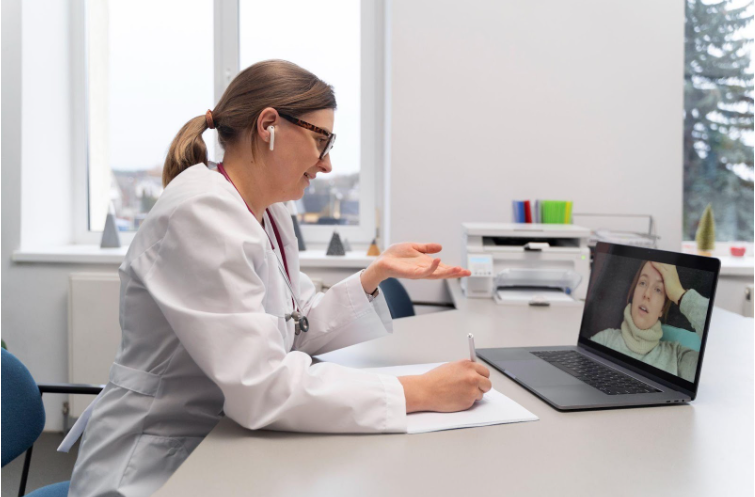Telehealth as Healthcare of the Future: What You Need to Know in 2025

The healthcare sector is critical to the life of a society. This sphere plays a crucial role not only in ensuring the well-being and health of the population, but also in the country’s economic development. An efficient healthcare system is the key to the country’s sustainable development; therefore, this sphere is constantly improving, and we can observe the emergence of new solutions. One of such powerful solutions is telemedicine, and many believe that it is the future of healthcare in general. In this article, we will go into detail about telehealth, its benefits, and its impact on healthcare, as well as share the most important future trends.
The Concept of Telemedicine and Its Benefits
Telemedicine is the use of information technology to deliver health services remotely. At first glance, it may seem that this is not relevant for everyone and that it is better to physically visit a medical facility. However, now we will tell you in more detail about the possibilities of telehealth, and you will be convinced in the opposite.
Telehealth provides many medical services, makes medical care much more accessible, and helps healthcare providers save a lot of time and resources. Now we suggest you familiarize yourself with the main aspects that telemedicine includes.
Health Information Exchange
With telemedicine solutions, patients and medical workers, as well as medical workers with each other, can securely share test and examination results, medical images, and other medical data.
Remote Consultations
This is especially relevant for those who cannot visit a doctor for some reason but still need some advice. It is important to realize that a medical examination is best done at an appointment in a medical facility. Online video and audio consultations are great for patients who want to discuss symptoms and medical history or get recommendations on further treatment.
Continuing Education for Healthcare Professionals
Telemedicine makes it possible to hold educational events for employees, and they do not need to travel for this purpose, which also reduces costs for medical organizations. For this reason, many medical facilities today are taking advantage of telehealth software development. Thus, telecommunication technology greatly simplifies the conduct of lectures, seminars, and consilium.
How Telemedicine Affects the Healthcare Sector
The contribution of telehealth to modern healthcare cannot be overemphasized. It significantly expands the possibilities of providing medical services and improves their quality. In addition, telemedicine reduces the burden on medical institutions and makes medical care economically efficient. It brings many more advantages to this sector than one can imagine, and below, we will tell you about the most significant of them.
Cost Reduction
Telemedicine helps to optimize the use of medical resources and to significantly reduce transportation costs, particularly due to online consilium and seminars.
Availability
Telemedicine is a great tool that makes medical care much more accessible, which is especially helpful for patients who live in remote areas and have difficulty with transportation, the elderly, or patients with disabilities.
Increasing Patient Engagement
Through telemedicine, patients have access to a wealth of health information, which allows them to take a more active role in managing their health. It also makes patient monitoring and medical services in general much more qualitative.
Main Trends in the Development of Telemedicine
Telemedicine is constantly evolving and becoming even more convenient and accessible for both patients and medical professionals. Despite the high level of its development today, there are still some telehealth trends that are important to talk about.
Artificial Intelligence
It is expected that AI-based tools will be more actively implemented in the field of telemedicine. It not only helps to optimize and automate routine tasks in medical institutions but also simplifies the analysis of medical images, such as X-rays. Artificial Intelligence will make diagnostics even more accurate and will help detect certain diseases at early stages.
Development of Mobile Complexes
This is already in use, and it is expected that in the near future, such complexes will become more affordable and widespread. Examples of such complexes are specially equipped ambulances with telehealth equipment. This will further increase access to medical services and allow emergency care to be provided in hard-to-reach regions.
Integration with Wearable Devices
Smartwatches and other smart devices are extremely popular today. IoT technologies allow for continuous monitoring of patients. Thus, in case of deviations from the norm, doctors are able to intervene in time and prevent complications.
Thus, telehealth is an integral part of the medicine of the future. Now, we are already witnessing rapid development of this sphere, and it is expected to further increase the availability and efficiency of medical care, and, consequently, improve the quality of life of patients. This field is already actively changing the world of medicine and making it much more patient-centered!














